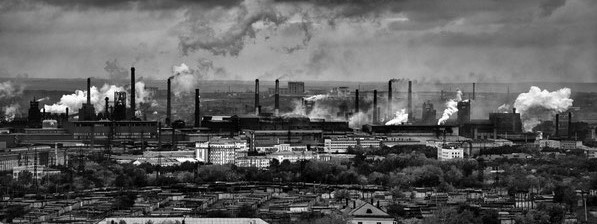“Move what you can, destroy what you can’t”.
By Andy Ford, Warrington South Labour Party member
In the summer and autumn of 1941, after the invasion of the USSR by Nazi Germany, the Soviet Union accomplished an incredible feat. As the Nazis advanced eastwards, 1,500 factories, along with their workers, and their families, were evacuated from European Russia far to the east, to the Urals, Siberia and Central Asia.
The western areas occupied by the Wehrmacht had been home to 85% of Russian aircraft production, nine tank factories, 70% of coal mines, 50% of steel and aluminium production and 40% of the electric power generated in the USSR. Their loss would have knocked Russia out of the war.
The orders, therefore, were “move what you can, destroy what you can’t”. As a result, Soviet GDP plunged by a third in only a year. And yet within another year the USSR was out-producing the Nazis in war industries.
In the 1930s the 5-year plans had often involved the purchase of American factories in components which were re-assembled, piece by piece, in the USSR, transplanting some of the most advanced industrial techniques to economically backward Russia. In total, over 500 factories were built with American machine tools and under the supervision of America engineers, who came with the factories to advise on set up and operation.
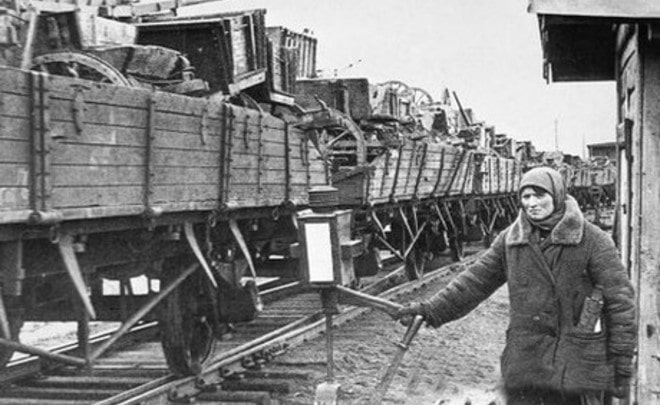
For instance the giant Magnitogorsk plant in the Urals was virtually a copy of US Steel in Gary, Indiana. Soviet output increased 70 times over from 1928 to 1939 and this allowed the Soviets to modernise their armed forces. The result was that by 1939 the USSR was using 10% of industrial capacity on military production and at that time was spending as much on arms as the US and UK combined. In that year alone the Soviet Union produced 3,000 tanks and 10,000 aircraft.
The heroic struggles of the Red Army, Soviet air force and navy were only possible because of Soviet industrial output. If the Second World War was a “war of production” the evacuation of its factories was the crucial step which allowed Russia to eventually out-produce the Nazis and win the war. A movement of industry on this scale was only possible because of existance of a state-owned planned economy.
Rebuilding a steel-works in 56 days
Having had the factories built in kit form in the first place made it much easier to take them apart, move and rebuild them, sometimes using the original instructions. For instance, production of the famous T-34 tank was moved 2,000 km from Kharkov to the Stalin-Ural railcar factory at Niznhy Tagil, Sverdlovsk, under the leadership of its designer, Alexander Morizov. This involved moving 30,000 workers and dependents, and 10,000 machine tools. They were all boxed up and moved east.
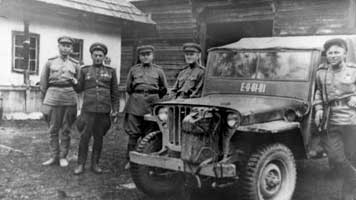
The ‘Kirov’ factory in Leningrad, formerly the famous Putilov works, was moved lock, stock, and barrel to the Urals. In total 16 million people moved east with their factories.
Workers re-assembling a steel works at Chelyabinsk were given just 75 days to restart production. This involved laying railway tracks, re-assembling 18 machine shops and connecting compressed air supplies. Starting with frozen ground, working round the clock, and living in tents, the workers achieved the task in 56 days.
Chelyabinsk became home to the world’s largest tank factory. This feat was repeated hundreds of times over, all whilst battling the Nazi advance across European Russia.
By 1942, despite a tremendous loss of territory, the USSR was out-producing Germany in tanks – 24,300 versus 6,200. The story was the same for aircraft where Factory 18, also in Sverdlovsk, built 15,000 Ilyushin fighter planes over the course of the war, dwarfing the production of Nazi Germany as a whole. In addition to the removal and re-assembly of the factories, the Soviets also built 3,500 factories from scratch from 1942 to 1946, which equates to 750 a year.
Distortions of the capitalist media and historians
Of course commentators, academic historians and the apologists of capitalism attribute the literally world-beating success of the Soviet Union to sheer state terror. Of course there were gulags and all-pervading secret police, with the Trotskyists the prime victims. But the workers of the Soviet Union rallied round the gains of 1917 and fought for them despite, not because of, Stalin and his crew of cut throats. The essential and undisputable element in the lifting of production levels was an economy build around state ownership a plan, rather than the free capitalist ‘market’.
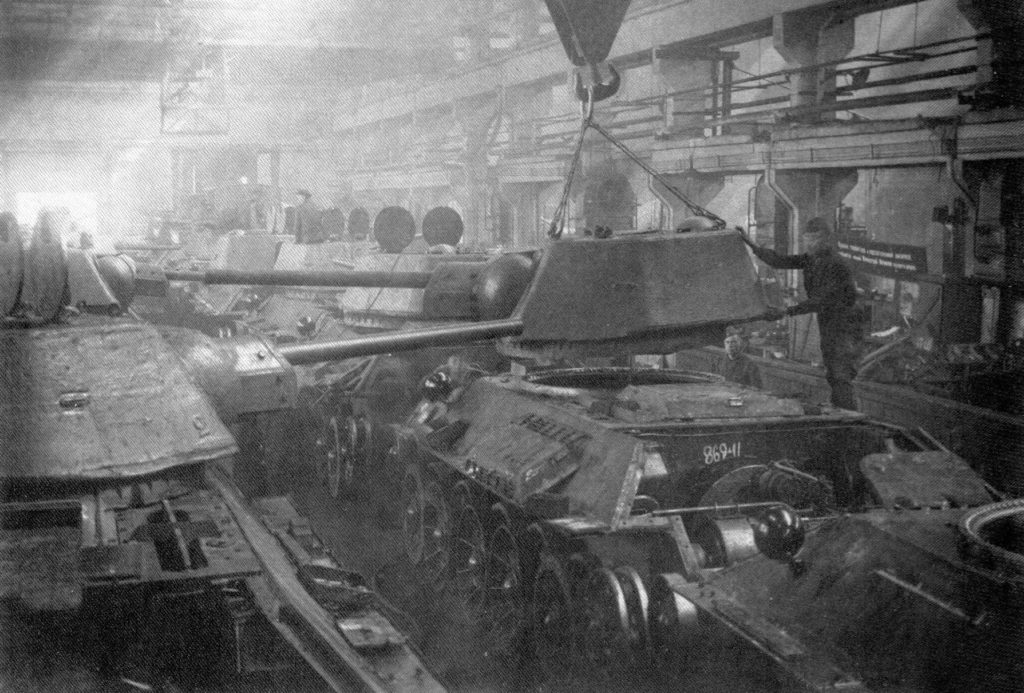
Where the soldiers of the Red Army were properly equipped and led, they fought tenaciously and the same spirit was evident among workers in the factories. No factory can be run efficiently at the point of a bayonet, and still less can a world-class tank like the T34 or fighter plane like the Ilyushin 10, be designed, built in huge quantities, and delivered combat-ready by simple compulsion and fear.
Stalinist methods did mean, however, that the war effort was delivered with great waste and inefficiency, A democratic Soviet regime would have performed far better. After all, the factories only had to be evacuated in the first place because of Stalin’s misjudgements and the purges of the top military in the months leading up to the war.
And although the Soviet economy excelled in heavy industrial production and manufacture of tanks, planes, machine guns and rifles, there was a near total neglect of light industry and agriculture. The result was that the Red Army supply lines often relied on horses or American trucks and jeeps supplied under lend-lease, and Russian civilians saw no meat for years, except what was supplied from the USA.
The Stalinist myth of the USSR winning the war alone was just that – a Cold War propaganda fairy tale. The imbalance between the different sectors of the Soviet economy contributed to defeats like that of the Second Shock Army outside Leningrad, where an initial breakthrough by Soviet armour could not be followed up because of logistical problems. The Second Army was surrounded and destroyed, and the city remained besieged for almost another year.
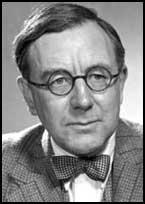
Nevertheless, the relocated factories did out-produce the Nazis and ensured a Soviet victory over fascism. It was largely the Soviet Union that fought the Second World War against Hitler. Even the historian AJP Taylor commented that once it was engaged in the war, at no time did the Soviet Union face less than three quarters of the German war machine.
Most capitalist historians, and even more so the film industry, have preferred to pass over these facts in silence. How can they admit that planned and state-owned industry won the war?
Now, after the Cold War is ended, they have started chipping away at the Soviet war record – “It was all down to state terror”, “The tanks were no good really and plagued with quality problems” or the “USSR was dependent on lend lease”. But the facts speak otherwise.
On the other hand, the Stalinists and Communist Parties have propagated a myth of Stalin as a “great war leader” and of the Soviet Union defeating Nazism single-handed, ignoring the huge loss of life caused by the mistakes of the high command in the early period, and in industrial matters, engaging in Stahanovite clichés of production and minimising the suffering of civilians and oppression of the workers in the factories.
Trotsky’s position was quite clear: he called for the restoration of Soviet democracy in the factories and territories of the USSR, by a political revolution to remove Stalin and the Stalinists. At the same time he always defended the Soviet Union in the face of capitalist, including Nazi, aggression. He pointed out the superiority of a planned economy over the anarchy of capitalist market forces, but stressed the importance of working class democracy for the efficient functioning of a planned economy and industry. Without that democracy every success came at twice the effort and double the cost.

